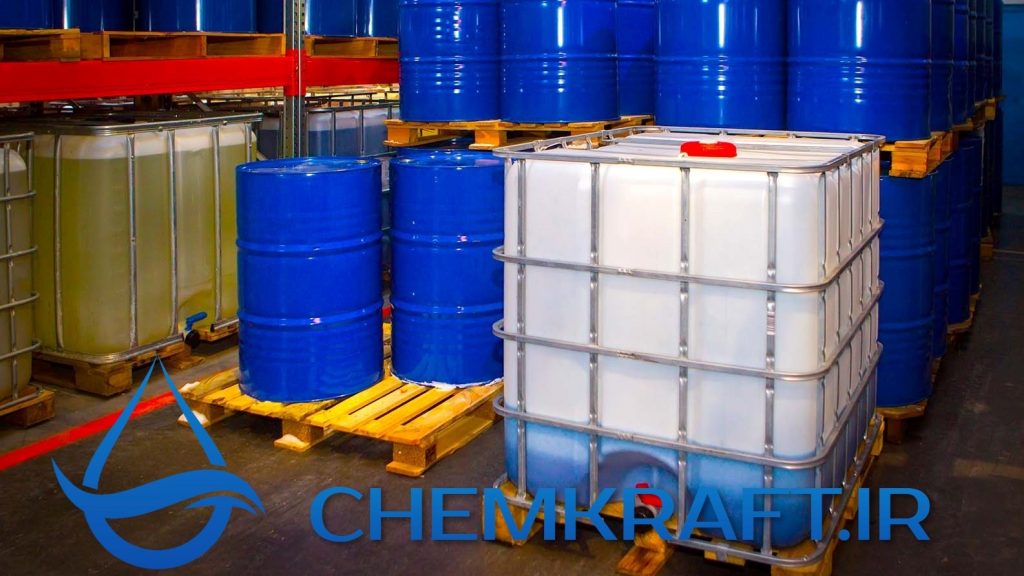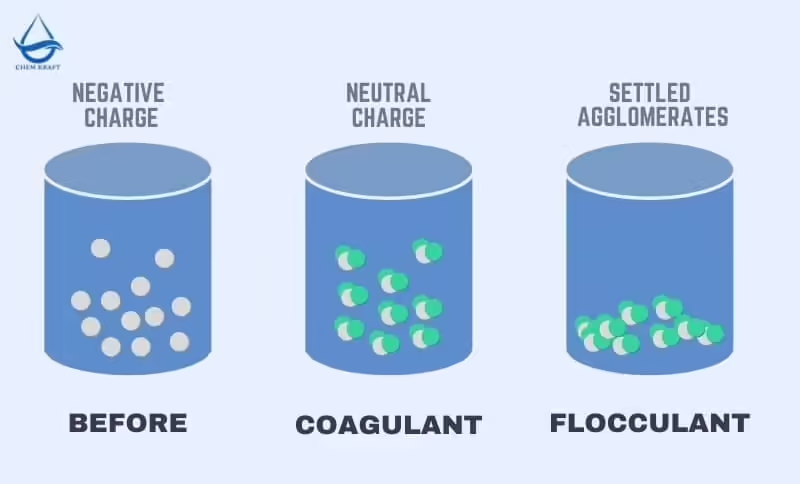Definitions
Flocculants and coagulants play a crucial role in various industries and environmental applications, particularly in water treatment processes. These chemical agents are essential for facilitating the removal of suspended particles, colloids, and contaminants from water, resulting in cleaner and safer water sources. Understanding the differences, applications, and appropriate usage of flocculants and coagulants is vital for efficient water treatment and environmental remediation. This article aims to provide a comprehensive overview of flocculants and coagulants, exploring their definitions, highlighting their distinct characteristics, examining their role in water treatment, delving into their industrial and environmental applications, discussing the selection process, and offering best practices for dosage and handling. By gaining a deeper understanding of flocculants and coagulants, professionals and decision-makers can effectively choose the right chemical agents and optimize water treatment processes for a sustainable and healthier future.
What are Flocculants and Coagulants?
Flocculants and coagulants are chemicals used in water treatment processes to remove impurities and particles. These substances play a crucial role in achieving clean and safe water for various applications.
Importance of Flocculants and Coagulants in Water Treatment
Water treatment plants rely on these two chemicals to help eliminate suspended solids, organic matter, and other contaminants from water sources. These substances assist in the formation of larger particles, making them easier to remove through sedimentation or filtration. Without flocculants and coagulants, the purification process would be much more challenging and less effective.
Understanding the Differences between Flocculants and Coagulants
Definition and Characteristics of Flocculants
Flocculants are polymers that promote the aggregation and settling of particles suspended in water. They work by creating a mesh-like structure that binds the particles together, forming larger clumps or flocs. Flocculants are typically long-chain molecules that have a positive charge, enabling them to neutralize the negative charges on particles and promote particle attraction.
Definition and Characteristics of Coagulants
Coagulants, on the other hand, are chemicals that destabilize particles and cause them to clump together. Unlike flocculants, coagulants typically have a positive charge and neutralize the negative charges on suspended particles through charge neutralization or sweep coagulation. Coagulants facilitate the aggregation of particles, forming larger and heavier flocs that settle more easily.
Key Differences between Flocculants and Coagulants
While both flocculants and coagulants assist in particle removal, the main difference lies in their mechanisms of action. Flocculants primarily focus on binding particles together to form larger flocs, whereas coagulants destabilize particles and enable their aggregation. Additionally, the charges carried by flocculants and coagulants differ, with flocculants typically having a positive charge and coagulants having a positive or neutral charge.
The Role of these two chemicals in Water Treatment
Flocculation and Coagulation Process
Flocculation and coagulation are essential processes in water treatment that involve the addition of flocculants and coagulants, respectively. Coagulation destabilizes particles and forms microflocs, while flocculation ensures the formation of larger, visible flocs. These flocs are then easily separated and removed from the water, enhancing its quality.
Mechanisms of Action
The mechanisms of action for flocculants and coagulants involve charge neutralization, adsorption, and bridging. Flocculants neutralize the electric charges on particles, allowing them to come together and form flocs. Coagulants, on the other hand, aid in the adsorption and bridging of particles, resulting in larger and denser flocs that settle more effectively.
Industrial Applications
In Mining and Mineral Processing
Flocculants and coagulants are widely used in mining and mineral processing industries to separate solids from liquids, improve solid-liquid separation processes, and enhance the efficiency of mineral recovery. They help in the clarification of process water, the dewatering of tailings, and the treatment of wastewater generated during mining operations.
In Food and Beverage Industry
The food and beverage industry utilizes flocculants and coagulants for various applications such as clarification, separation, and filtration. These substances aid in the removal of impurities, sediments, and unwanted particles in processes like juice clarification, wine filtration, and sugar production, ensuring high-quality and visually appealing end products.
In Municipal Wastewater Treatment
In municipal wastewater treatment plants, these two chemicals are essential for the removal of solids, organic matter, and contaminants from wastewater. They help in the settling of suspended particles and facilitate the separation of water from sludge, allowing for the safe discharge or reuse of treated water. Flocculants and coagulants play a crucial role in achieving clean and environmentally friendly wastewater treatment processes.
So, the main takeaway here is that these two chemicals are a dynamic duo in the water treatment world, working together to make our water cleaner and safer. Whether it’s in mining, food and beverage production, or wastewater treatment, their unique characteristics and mechanisms of action play vital roles in various industrial applications of these two chemicals
Safety Precautions in Handling
Environmental Applications
Flocculants and coagulants, those superheroes of water treatment, have a wide range of environmental applications. Let’s dive into a few of them!
In Sediment Control
Sediment control is crucial in construction sites and other areas where erosion can lead to water pollution. Flocculants and coagulants come to the rescue by clumping together those pesky sediment particles, making them easier to remove from the water. It’s like putting the unruly sediment particles in a timeout corner. Goodbye, muck!

In Oil Spill Remediation
When oil spills happen, it’s a messy situation. But fear not! Flocculants and coagulants swoop in to save the day. These dynamic duos make the oil droplets stick together, forming larger clumps that can be more easily skimmed off the water’s surface. It’s like wrangling up a bunch of rogue oil droplets and giving them a group hug. Way to go, these two chemicals!
Flocculants and Coagulants in Lake and Pond Restoration
Sometimes lakes and ponds need a little TLC, and that’s where our trusty flocculants and coagulants come in. They help to clear up algae blooms and improve water clarity, transforming those murky messes into crystal-clear bodies of water. It’s like giving the lakes and ponds a spa day, purifying their troubled waters. Cheers to that!
Choosing the Right Flocculant or Coagulant for Your Application
Factors to Consider in these two chemicals Selection
Choosing the right flocculant or coagulant is key to achieving optimal results. Factors such as the water chemistry, type and size of particles, and desired treatment goals should all be taken into account. It’s like finding the perfect hair product that suits your specific needs – you wouldn’t want to use hairspray to tame frizz, right?
Different Types of Flocculants and Coagulants and Their Suitability
Just like there are different hairstyles for different occasions, there are different types of flocculants and coagulants for various applications. Some may be more effective at removing organic matter, while others excel at treating inorganic pollutants. Knowing which one to use is like having a diverse hair product collection for all your styling needs. These two chemicals have got you covered!
Best Practices for Flocculant and Coagulant Dosage and Handling
Proper Dosage of these two chemicals
Using the right amount of flocculant or coagulant is crucial for achieving optimal treatment results. Too little, and those particles might remain stubbornly suspended in the water. Too much, and you risk wasting product and potentially harming the environment. It’s like adding just the right amount of seasoning to your dish – too little and it lacks flavor, too much and it’s an overpowering mess.
Safety Precautions in Handling
While these two chemicals may be water treatment superheroes, they should be handled with care. Following proper safety precautions, such as wearing protective gear and avoiding inhalation or ingestion, is essential. It’s like protecting yourself from potential mishaps – safety first, superheroes!
Conclusion
Flocculants and coagulants may have serious names, but they sure know how to have fun while saving the day in water treatment. From controlling sediment and remedying oil spills to restoring lakes and ponds, these dynamic duos play a vital role in environmental applications. Just remember to choose the right flocculant or coagulant, handle them with care, and watch them work their magic. Cheers to cleaner water and the unsung heroes behind it! In conclusion, these two chemicals are invaluable tools in water treatment and environmental remediation.
Their ability to aggregate and remove impurities from water sources has a significant impact on improving water quality and ensuring the safety of our ecosystems. By understanding the differences between these two chemicals, exploring their applications in various industries, and implementing best practices for their usage, we can achieve more efficient and sustainable water treatment processes. As we move forward, continued research and development in flocculant and coagulant technologies will pave the way for even more effective and environmentally friendly solutions in the future. Together, we can work towards a cleaner and healthier world for generations to come.
FAQ
What is the difference between these two chemicals?
Flocculants are substances that promote the aggregation of suspended particles, while coagulants are chemicals that destabilize colloidal particles and promote their clumping. Flocculants aid in the formation of larger flocs, which are easier to settle or filter out, while coagulants help in the initial stage of particle destabilization.
?How arethese two chemicals used in water treatment
These two chemicals are essential in water treatment processes. They are added to water to bind together suspended particles, colloids, and other impurities, allowing them to either settle at the bottom or be effectively filtered out. This results in cleaner and safer water that is suitable for consumption or further treatment.
How do I choose the right one for my application?
The selection of the appropriate flocculant or coagulant depends on several factors, including the type and characteristics of the water to be treated, the specific contaminants to be removed, and the desired treatment objectives. Consulting with water treatment professionals or conducting laboratory tests can help determine the most suitable chemical agents for your application.
Are there any safety precautions to consider when handling?
Yes, it is important to follow proper safety protocols when handling . This may include wearing appropriate personal protective equipment, ensuring proper ventilation in the working area, and following guidelines for safe storage and disposal of these chemicals. It is advisable to refer to safety data sheets and follow manufacturer recommendations to minimize any risks associated with handling these substances.










